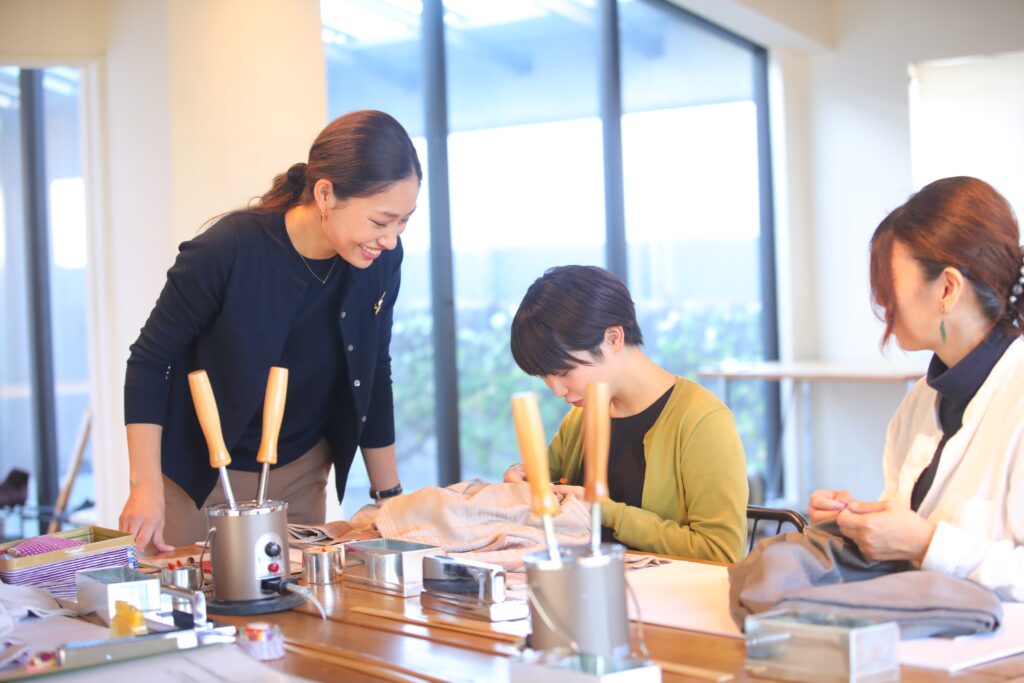In addition to small “mikazuki”, you may also see kimonos with long, thin stay cloth.
In this time, I will show you how to make such a thin stay cloth.
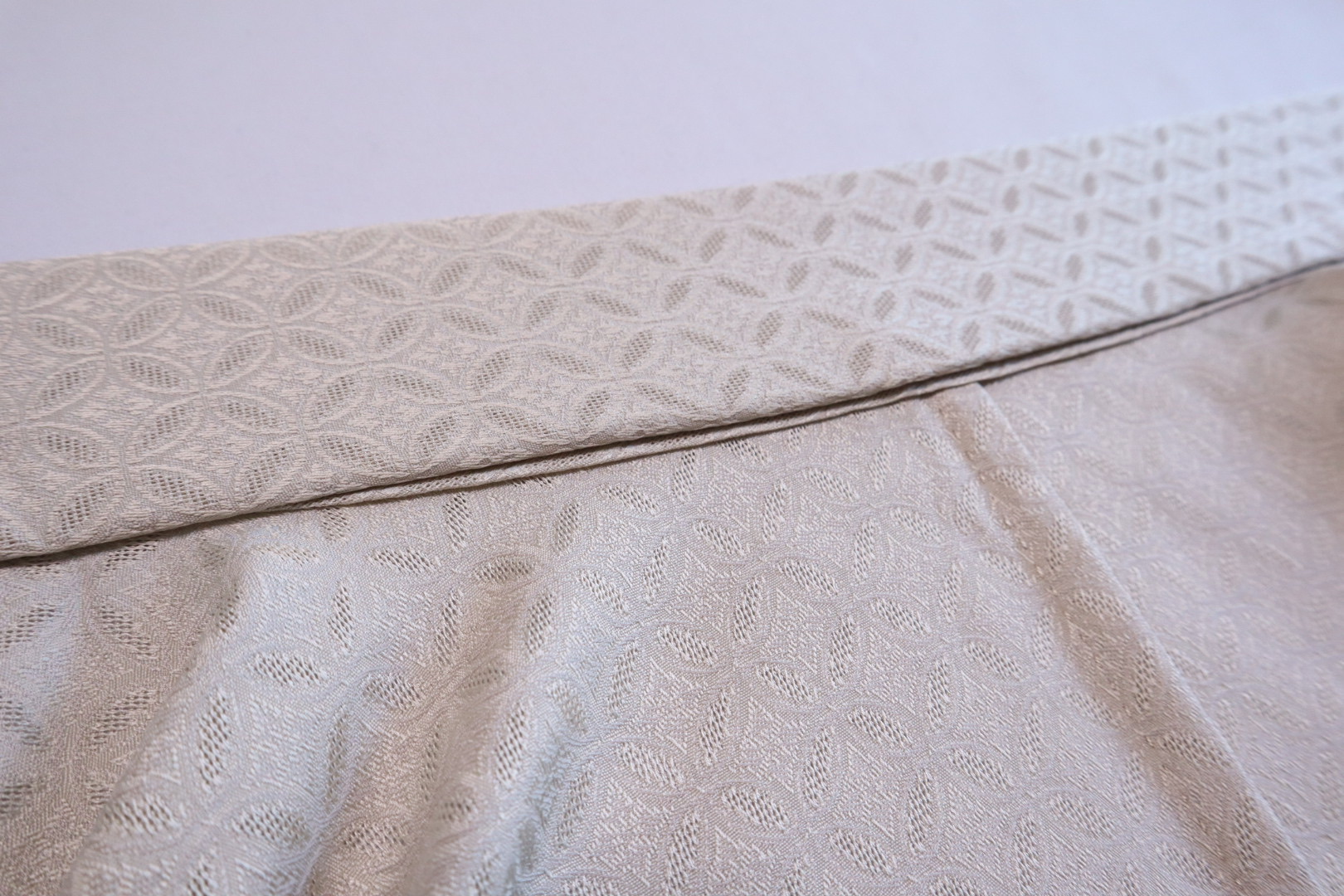
How to make “Chikaranuno”
Stay cloth is called “chikaranuno” in Japanese.
Prepare a piece of cloth about 25cm x the width of the tanmono fabric(about 37cm).
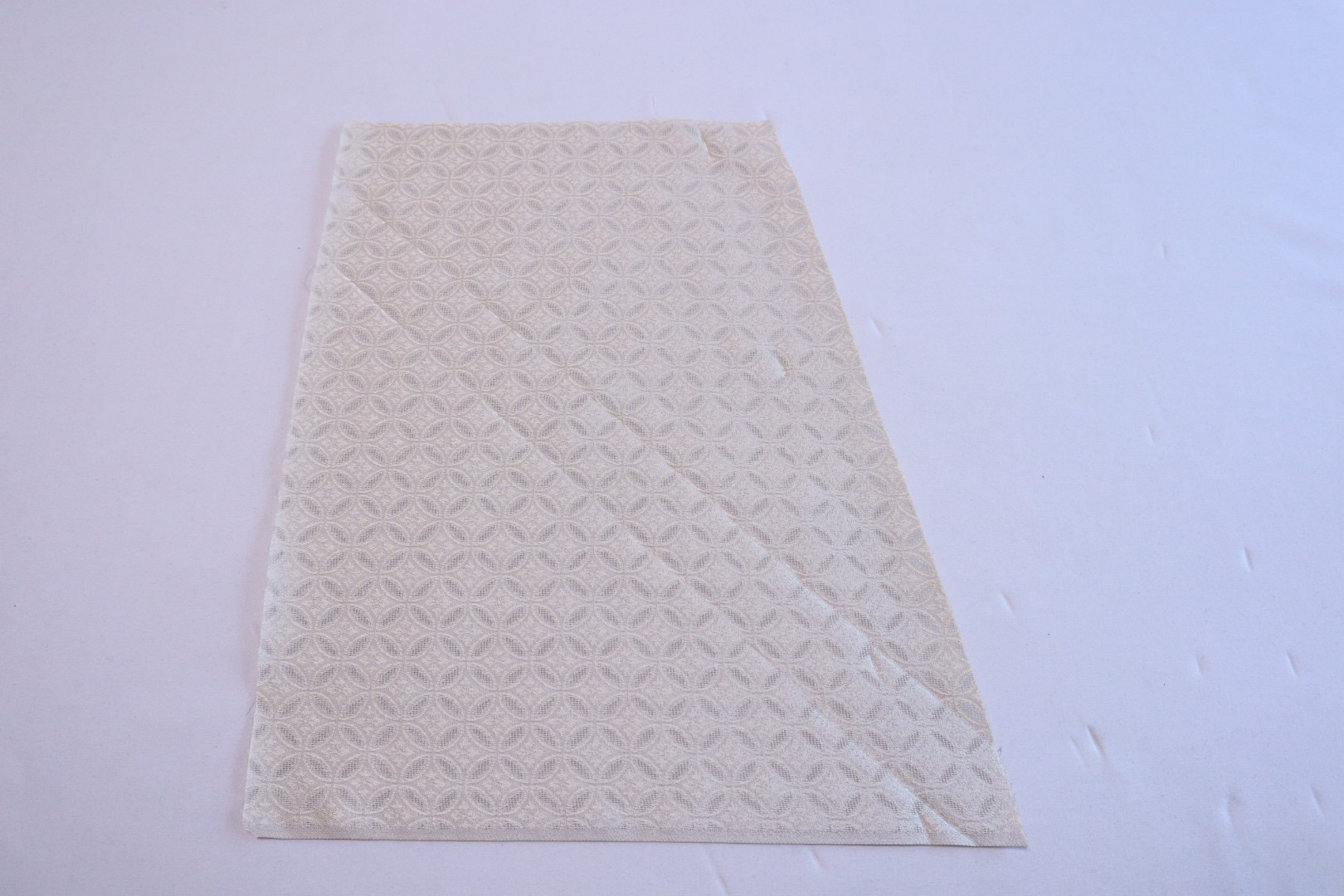
Cut the cloth on the bias. The width is about 2cm.
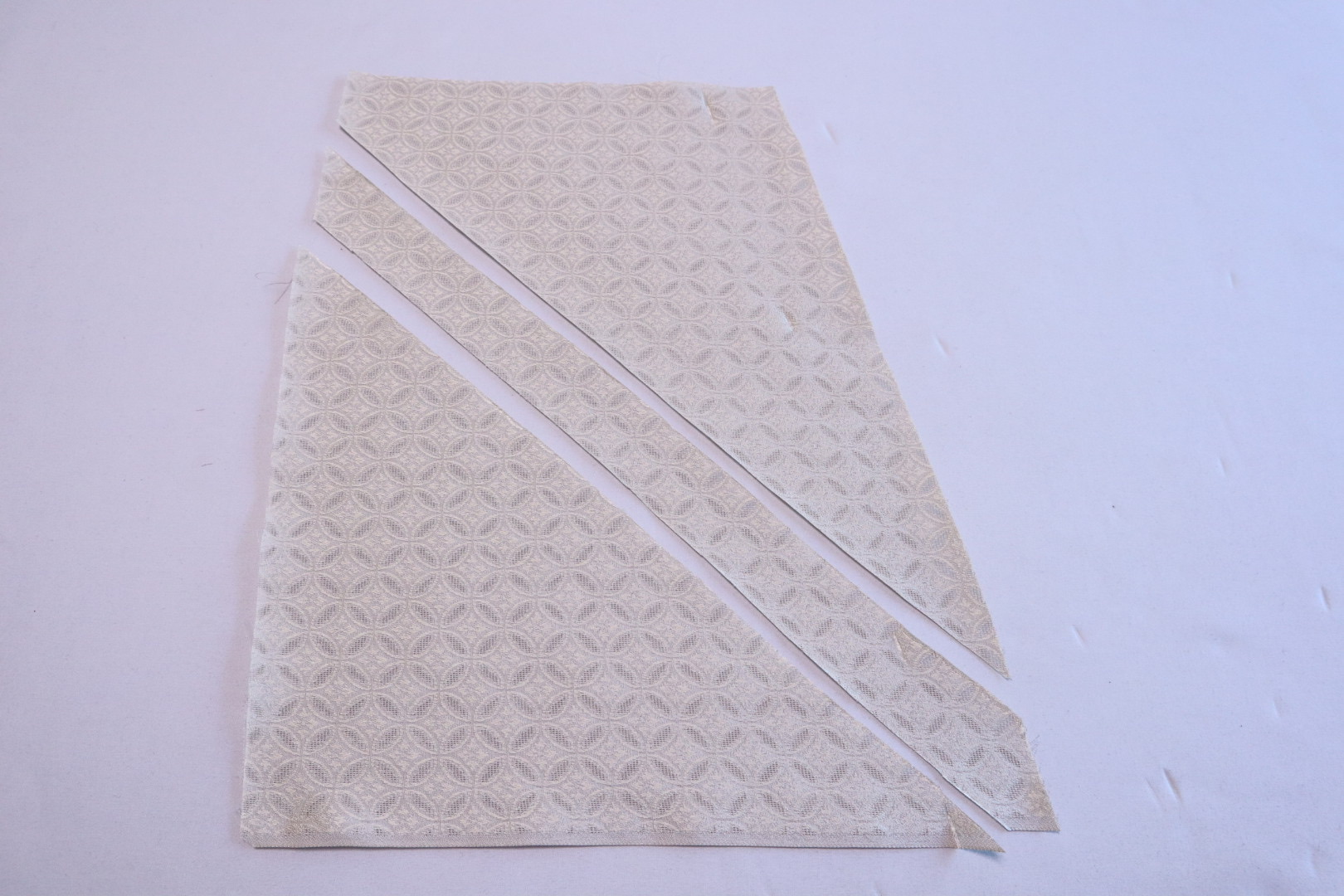
The cloth shown in the photo below could be cut out with a width of about 2 cm.
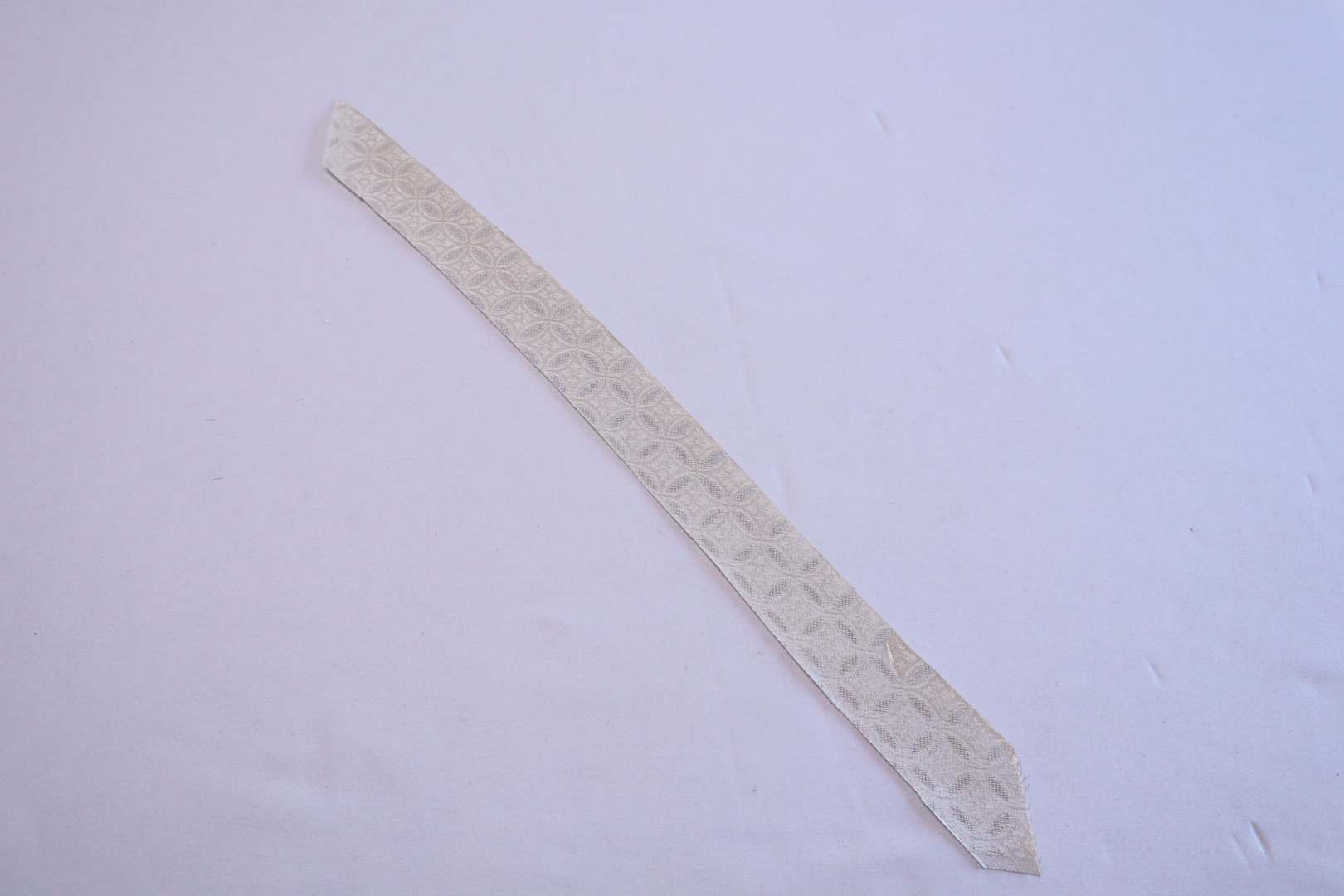
Fold a 2 cm piece of fabric in half and sew parallel at about the middle position.
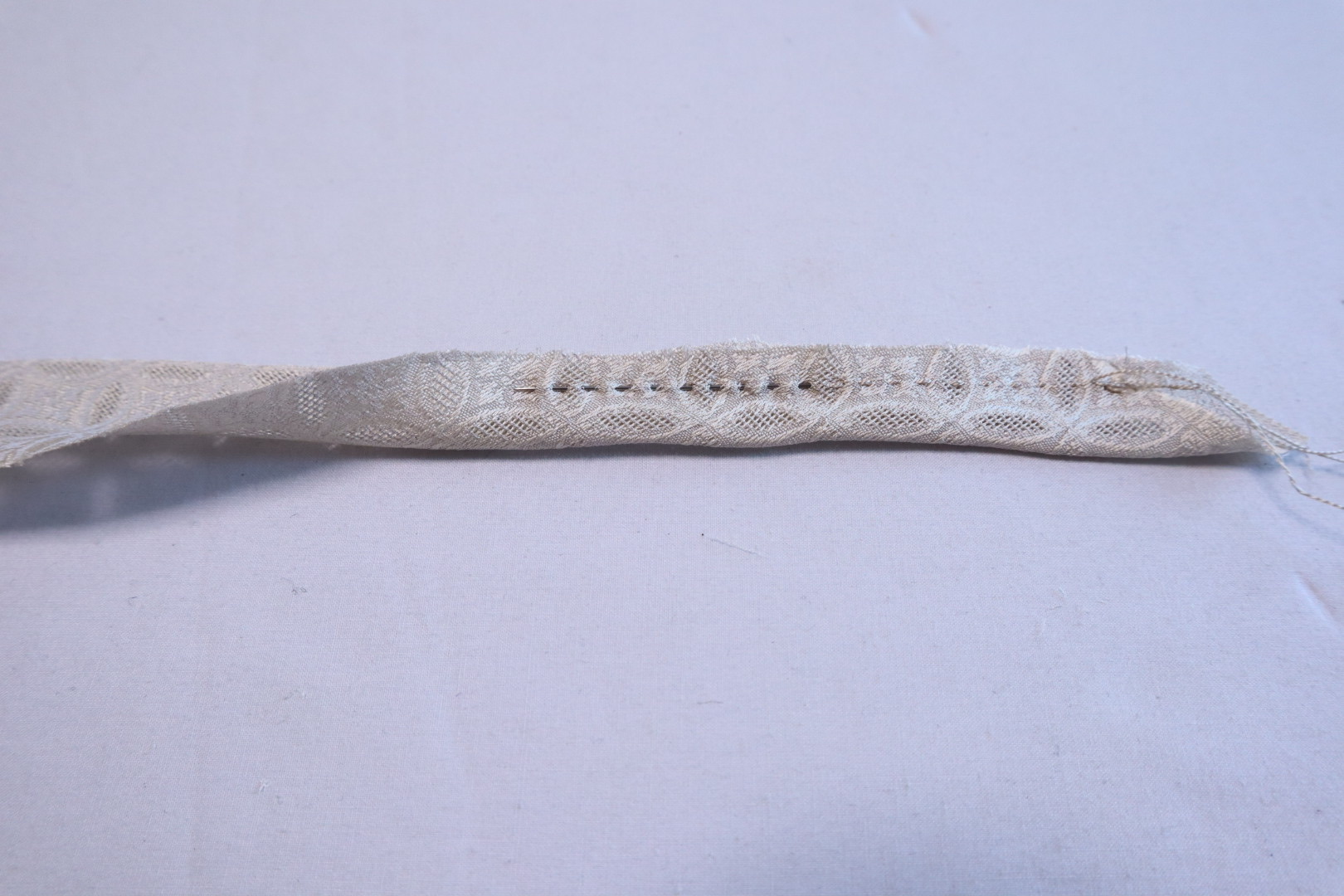
Stitch through to the end. Do not gather.
After stitch up, tie a knot and cut the thread.
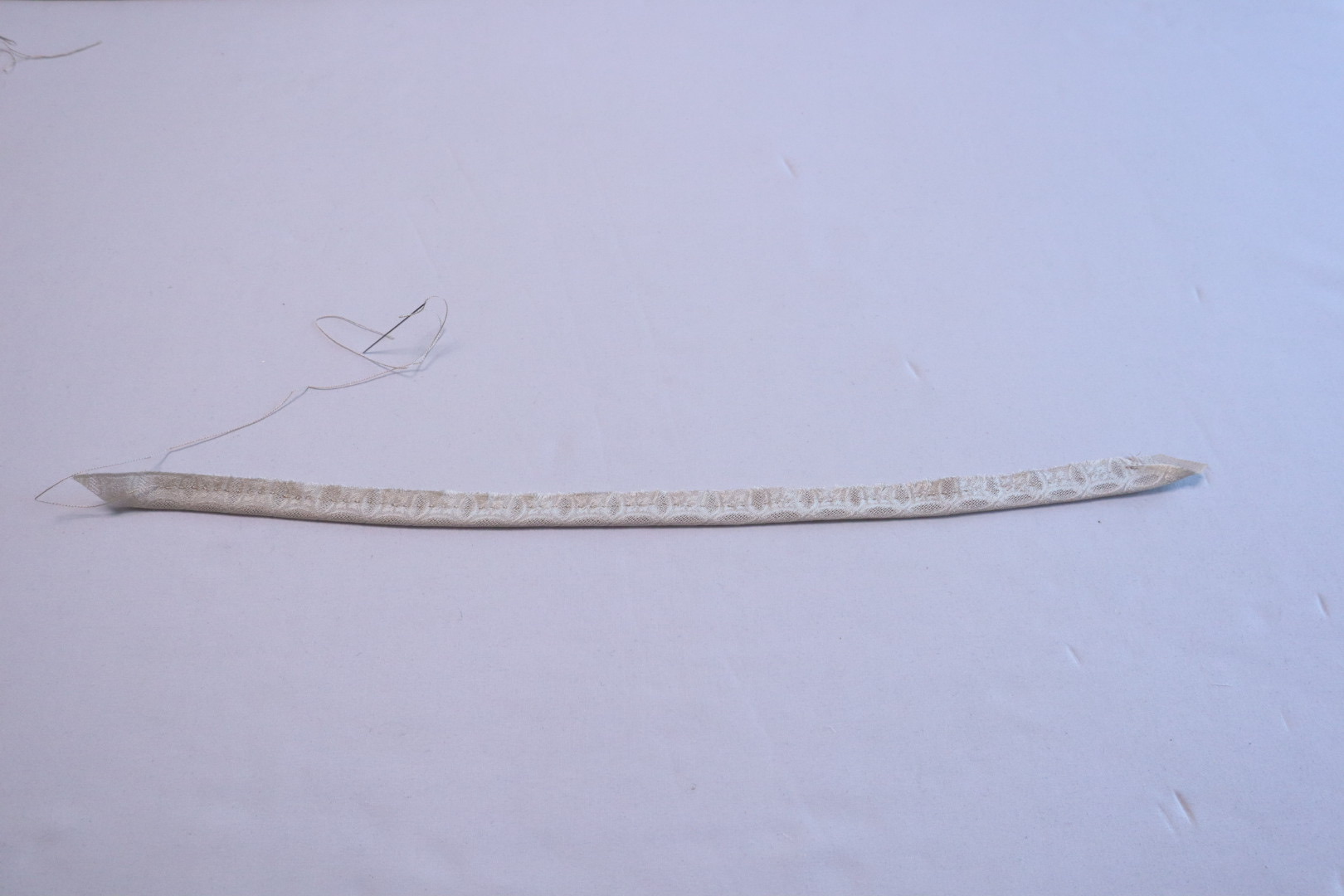
Iron to create a curved finish.
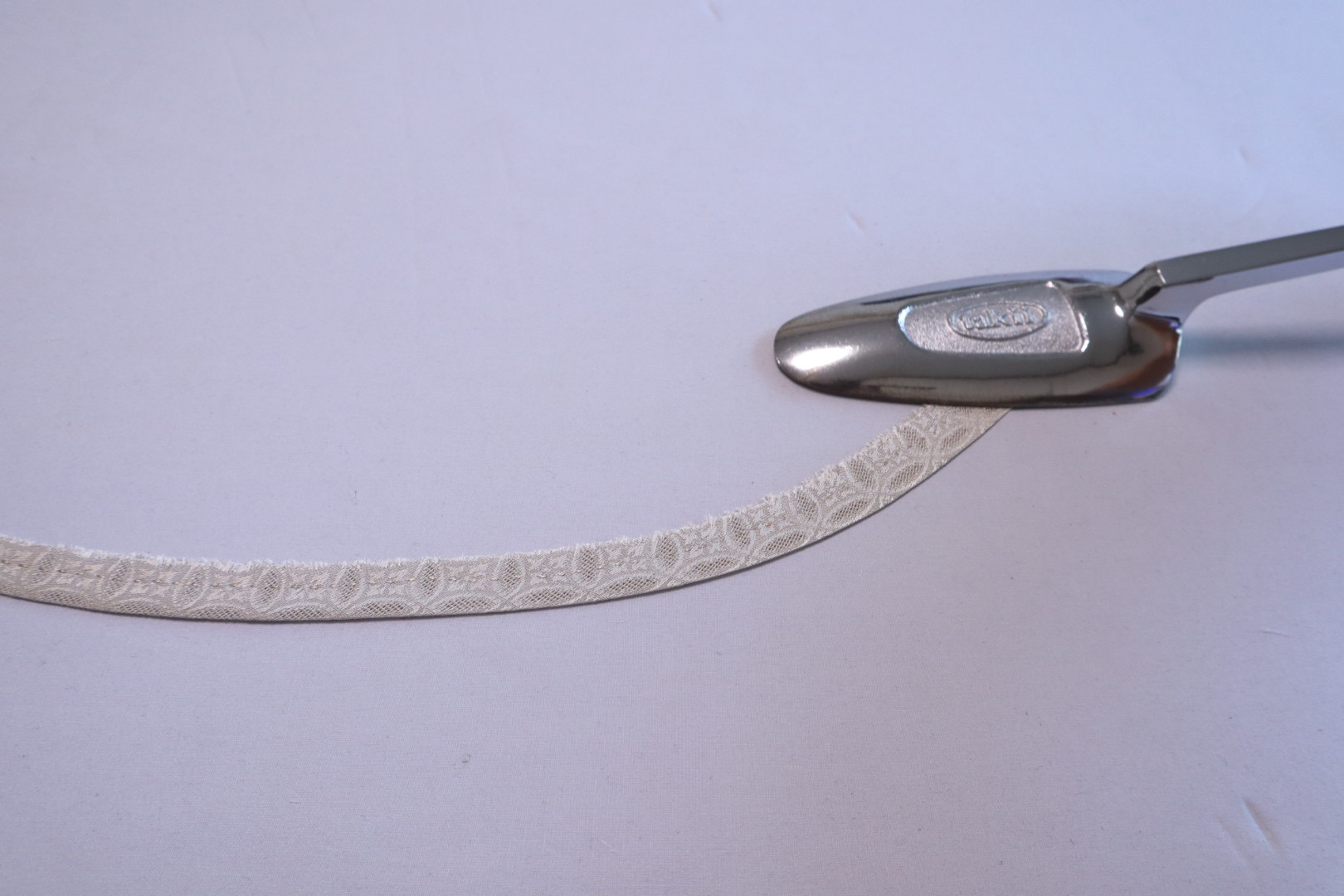
Completion.
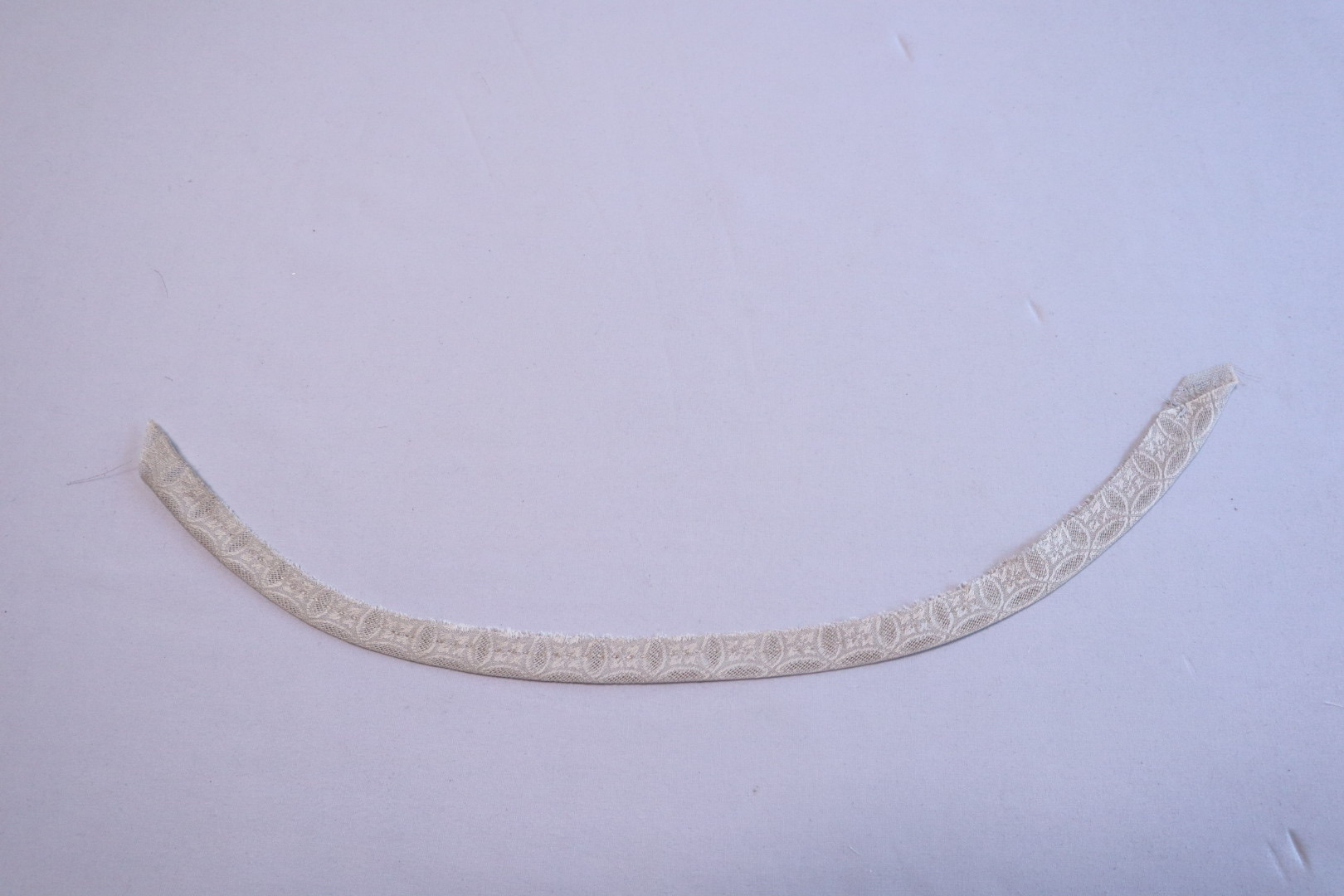
Examples showing the use
The photo shows the collar used for a haori.
The entire left and right “kataaki” are reinforced with one piece of “Chikaranuno” (Stay cloth).

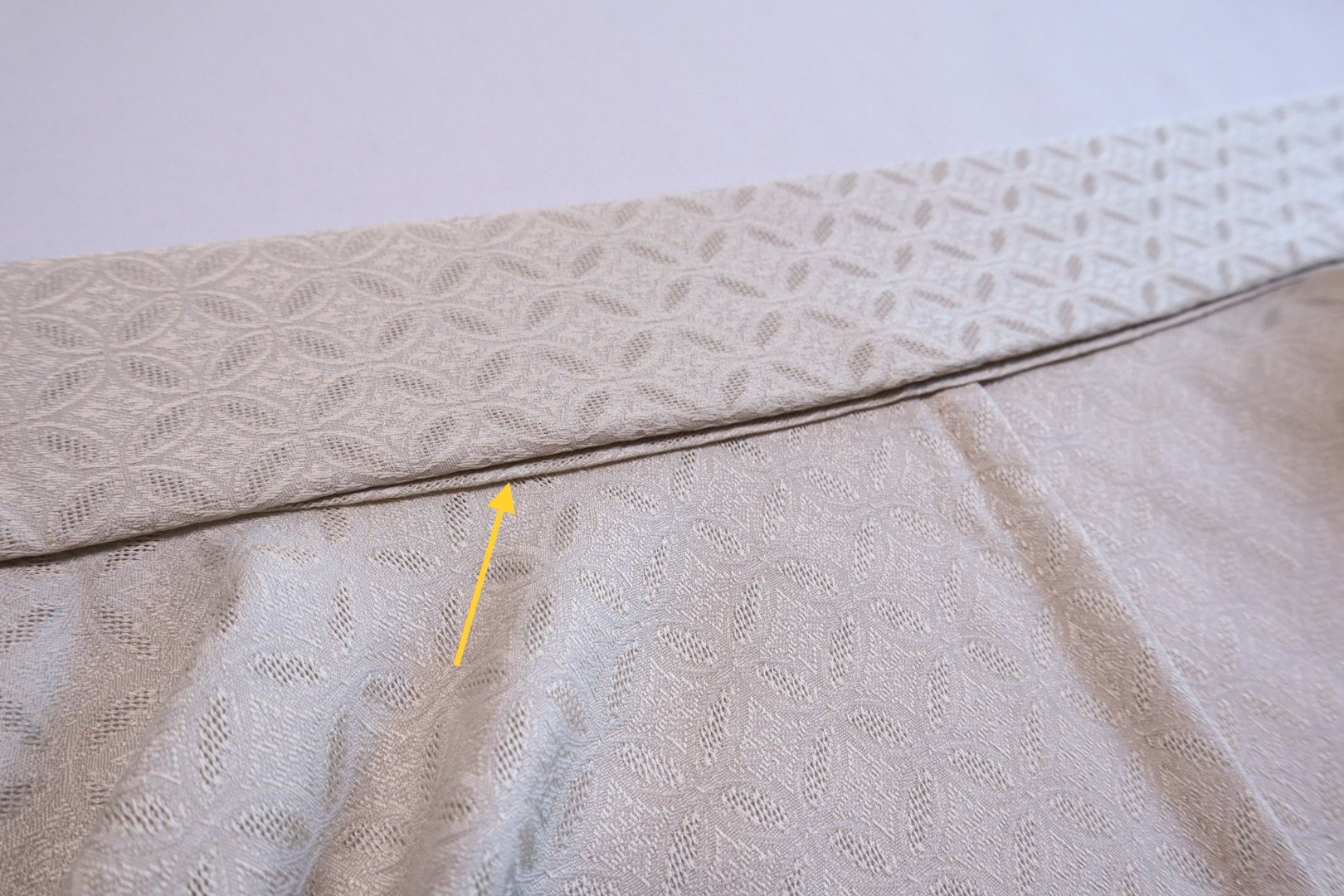
Other “Chikara-Nuno”
-
 Basic sewing method
Basic sewing method
How to make “chikara-Nuno” for attaching to Kataaki Part 2
In addition to small “mikazuki”, you may also see kimonos with long, thin stay cloth.In this time, I will show […] -
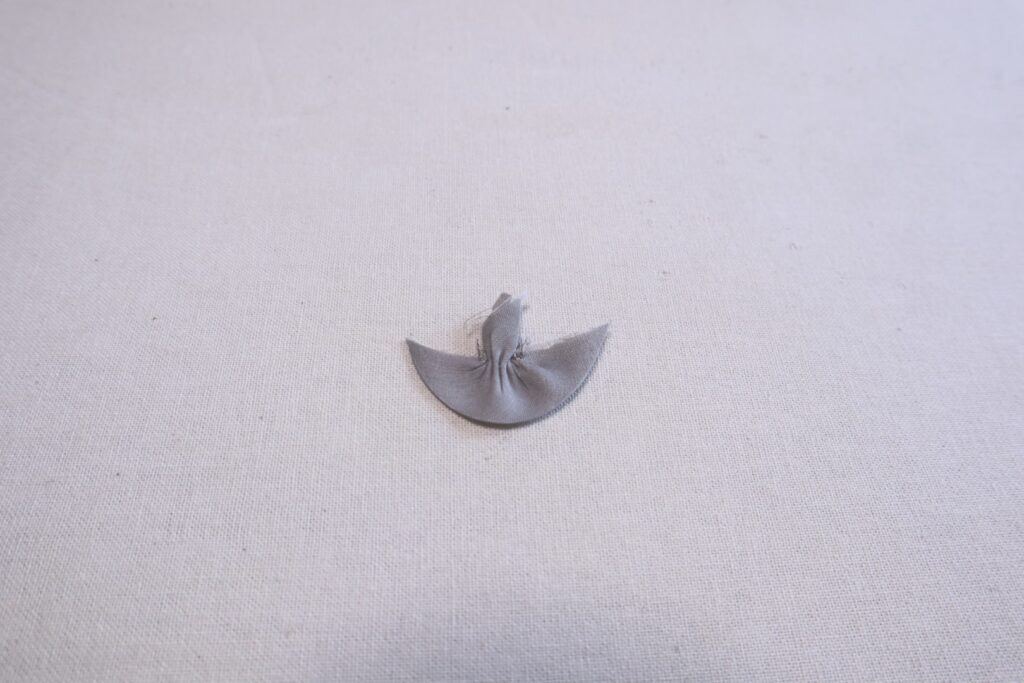 Sewing note
Sewing note
How to make a small “ Mikazuki ” for the stay cloth used to tailor Yukata and Hitoe-kimono.
This is how to make a “Mikazuki”, which is used as a stay cloth for hitoe-kimono and yukata.There are various […]
Let’s have fun sewing kimonos
with M KIMONO!
You can sew kimono anytime, anywhere.
Here is an environment where you can learn kimono sewing wherever you are.
Click here for details >>> https://mkimono.tv/en/
